Tamron 20-40mm f2.8 Di III review
-
-
Written by Thomas
Intro
The Tamron 20-40mm f2.8 Di III VXD (model A062) is a small and light non-stabilized wide-angle zoom lens with a constant f2.8 focal ratio that’s currently only available for Sony E-mount and corrected for full-frame sensors. Announced in August 2022 it has quite an unusual zoom-range putting it between Tamron’s 17-28mm f2.8 Di III wide-angle zoom lens from Tamron’s 28-75mm f2.8 Di III standard zoom. With a price which is less than half that of Sony’s high-end FE 16-35mm f2.8 G Master and a much smaller and lighter build it looks like an attractive alternative to existing lenses.
To find out whether the new Tamron 20-40mm f2.8 Di III rightfully earns a recommendation I tested it on the 42MP Sony A7R II body and compare it against the Tamron 17-28mm f2.8 Di III and Sony FE 16-35mm f2.8 GM. So, if you’re interested in how Tamron’s new wide-angle zoom lens performs, you’ve come to the right place!
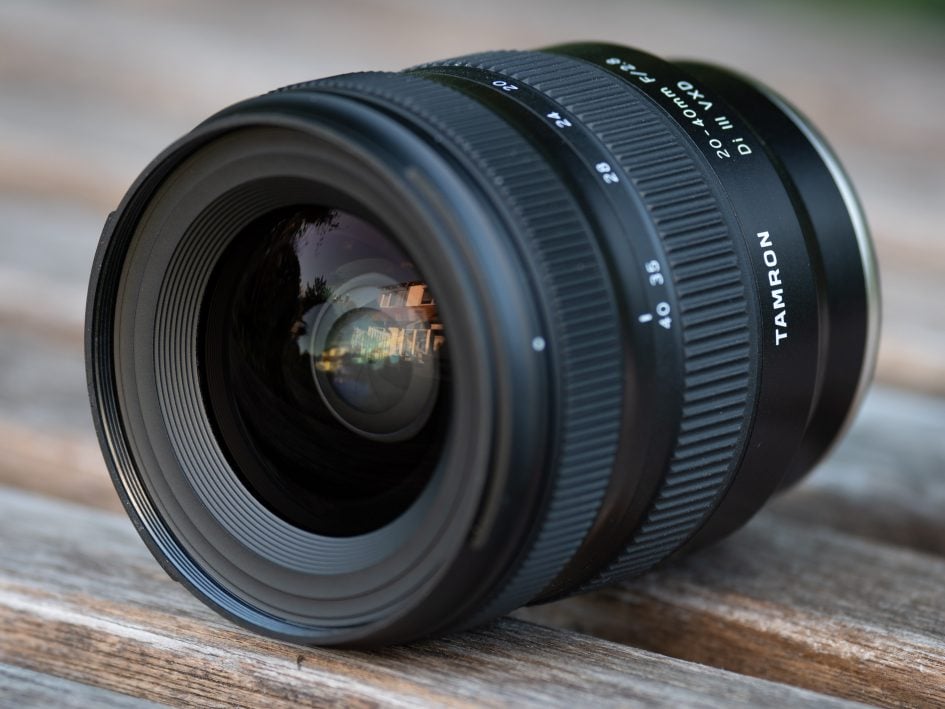
Facts and features
Let’s compare the new Tamron 20-40mm f2.8 Di III (“Tamron 20-40” for short) to the Tamron 17-28mm f2.8 Di III (“Tamron 17-28”) and Sony FE 16-35mm f2.8 GM (“Sony GM”). As usual I’ve rated the features with a [+] (or [++]), when it’s better than average or even state of the art, a [0] if it’s standard or just average, and [-] if there’s a disadvantage.
Size (diameter x length): 74 x 86mm (2.9 x 3.4in.) plus 27mm for the lens hood which is 87mm in diameter. The lens is shortest at 40mm focal length and extends by 9mm when zoomed back to 20mm focal length. The Tamron 17-28 is 73 x 99mm + 25mm lens hood and does not change its length with zooming. The Sony GM is much larger at 89 x 121mm + 23mm lens hood and extends another 14mm when zoomed back to 16mm focal length. [+]
Weight: At 364g (12.8 oz.) plus 25g for the lens hood the new Tamron 20-40 is even lighter than the Tamron 17-28 (420g + 22g lens hood). This is very light for an f2.8 zoom lens. The Sony GM is 680g + 31g lens hood. [+]
Optics: 12 elements (including 4 special dispersion and 3 aspherical elements) in 11 groups – similar to the Tamron 17-28. The Sony GM has a more complex optical design (16/13). [+]
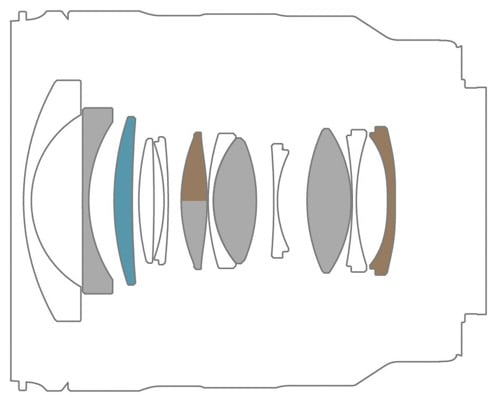
Minimum object distance is 0.29m (0.95ft.) with a magnification of 1:4.4 at 40mm focal length using manual focus. This is quite good, but you have a working distance between the front of the lens and the object of only 18cm. At the wide end the new Tamron even goes down to 1:3.3 but naturally the working distance shrinks even further to a meager 6cm. At 40mm focal length a magnification of 1:10 is achieved at 0.51m giving a working distance of 0.37m with lens hood attached. The Tamron 17-28 achieves 1:4.3 at the short end and 1:4.5 at the long end with a working distance of 0.11m. The Sony GM achieves a maximum magnification of 1:4.8 with 0.12m working distance. [+]
Filter-thread: Both Tamrons have a 67mm filter-thread which is much smaller and cheaper than the 82mm filters the Sony GM needs. [+]
Image stabilization: None of the lenses in this comparison offers optical stabilization. But modern Sony Alpha bodies provide built-in sensor-shift stabilization over 5 axis. [0]
Auto focus: All lenses in this comparison offer autofocus with built-in focus drive. Manual-focus override is by simply turning the dedicated focus ring. The focus ring on both Tamron lenses has a variable gearing that allows for very precise manual focus when turned slowly. But the action of the focus ring on the Tamron 20-40 can be switched via Tamron’s lens Utility (TLU) between the usual variable gearing or linear gearing (with four different choices of rotation angles from 90 degrees to 360 degrees) and the direction of the ring can be reversed. The Sony GM has an additional focus hold button and offers linear gearing only. [+]
Covers full frame or smaller. Same with the alternatives. [+]
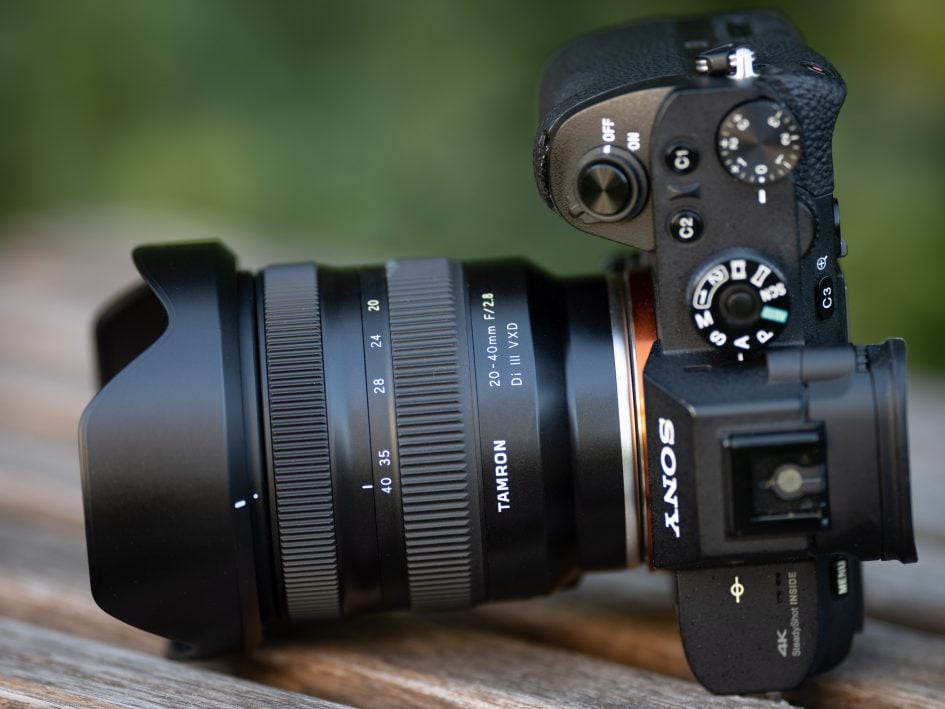
Price: The Tamron 20-40 is listed at 950 EUR (incl. 19% VAT) / 700 USD / 880 GBP – which makes the current US price look oddly low. The Tamron 17-28 is 800 EUR / 800 USD / 700 GBP. Both Tamron lenses are less than half the price of the Sony G-Master which goes for a whopping 2000 EUR / 2000 USD / 1850 GBP even at Black Friday Savings. [+]
Both Tamron lenses come without pouch/strap but the lens hood is included and reversible for transport. The Sony GM has a nice lens case but no strap. Its lens hood has a lock to prevent it from accidentally falling off. [0]
None of the lenses in this comparison have an aperture ring. [0]
Sealing: Both Tamron lenses have a rubber grommet at the lens-mount plus further weather-sealing throughout the construction and fluorine coating on the front lens for easier cleaning. Similar to the Sony GM. [+]
At a score of 0[-]/3[0]/9[+] the Tamron 20-40mm f2.8 Di III has a very good feature set. Especially noteworthy is the small size and weight considering its constant f2.8 focal ratio. The lens is also fully weather sealed, has a nice maximum magnification, and offers good configurability of its focus ring through Tamron’s Lens Utility. The 2x zoom-range is not bad (see comparison of coverage below) but Tamon’s choice of focal lengths raises the question which other lens(es) to match with their 20-40mm: 24-70mm/28-75mm produces a pretty big overlap while 70-180/200mm leaves a big gap between 40mm and 70mm, and Tamron’s 50-400mm would be an unusual complement. The best match is perhaps Tamron’s 35-150mm f2-2.8 Di III: Both lenses together cover a 7.5x zoom range with only a slight overlap and offer fairly bright focal ratios. And there might be another reason for Tamron’s choice of focal lengths: There is also no overlap with an existing Z-Nikkor zoom lens which might increase the chances that either Tamron will offer this lens with Nikon Z-mount too or Nikon will use Tamron’s optical design and build their own 20-40mm f2.8 lens.
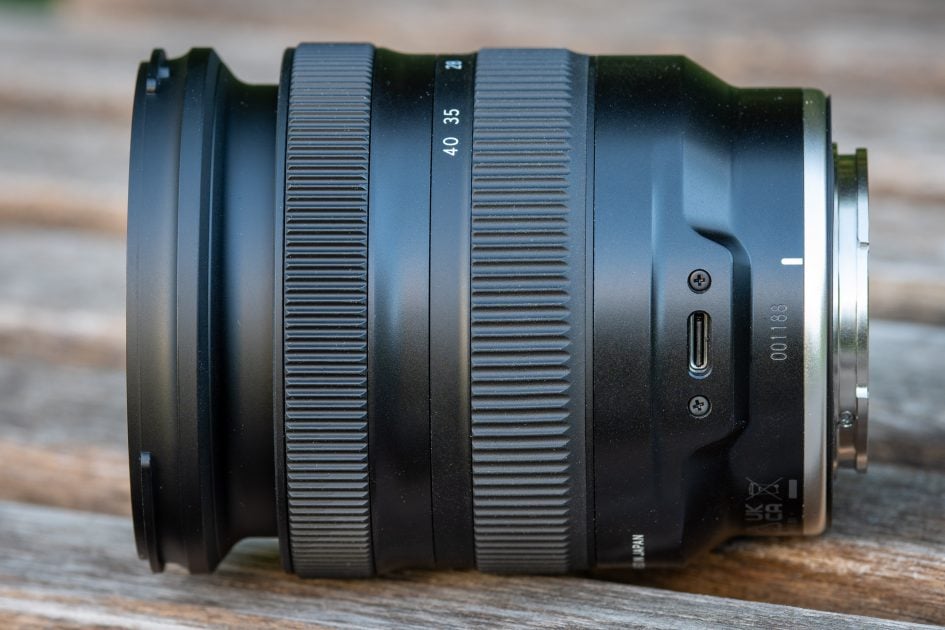
Coverage
There is no exact match for Tamron’s 20-40mm zoom range. But if you compare its coverage with that of the Tamron 17-28mm f2.8 Di III or Sony’s FE 16-35mm f2.8 GM there are very visibly differences in angle-of-view and reach:

Above: Tamron 20-40mm f2.8 Di III coverage on Sony A7R II full-frame body at 20mm (left) and 40mm (right); RAW developed with Adobe lens profile, Distortion Compensation = 100%

Above: Tamron 17-28mm f2.8 Di III coverage on Sony A7R II full-frame body at 17mm (left) and 28mm (right); JPG straight out of camera with Distortion Compensation = Auto

Above: Sony FE 16-35mm f2.8 GM coverage at 16mm (left) and 35mm (right); JPG straight out of camera with Distortion Compensation = Auto
The differences in angle-of-view (diagonally) on the wide end are 95 degrees (20mm), 104 degrees (17mm), 107 degrees (16mm). This might become critically important if you cannot step further back to capture the scene completely. At the long end 40mm focal length delivers 14% more reach/magnification than 35mm and 43% more reach/magnification than 28mm. So, while the difference between the Sony 16-35 and the Tamron 20-40 does not look too big at the long end, the difference between both Tamron lenses is obvious: If you crop an image shot at 28mm to match the angle of view of 40mm focal length you lose 51% of your pixels ending up with 21MP instead of 42MP.
Focus and zoom
Focus accuracy and repeatability is critical to consistently produce sharp shots. Repeatability (the accuracy of focus on the same subject after repeated focus-acquisition) of this lens at 40mm focal length is very good (measured 99.1% in Reikan FoCal) if I ignore one total failure to focus over a series of 40 shots on a A7R II. There is little variation whether the lens focuses from a closer distance or from infinity. At 40mm focal length the lens focuses extremely fast in around 0.2 sec from infinity to 0.51m (1:10 magnification).
The zoom ring turns through 60 degrees the way Sony users are used to and has a 14mm wide rubber surface with a good grip. It turns smoothly and can easily be operated with one finger. Same is true for the focus ring which is 11mm wide and is located at the front of the lens.
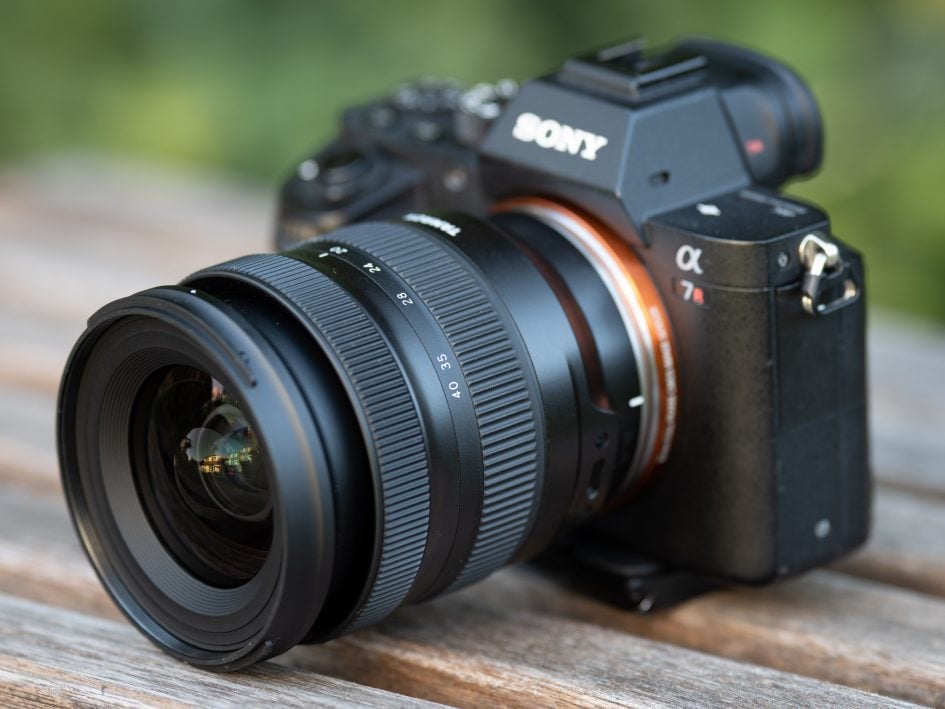
AF-operation of the lens is quiet, be it in photo-mode or if you record video with the built-in microphone.
As you pull focus, you’ll notice very little focus breathing: the image became 2% more magnified when I adjusted focus from infinity to 0.51m at 40mm focal length. This is hardly noticeable when shooting videos. Same at 20mm focal length.
I also tested whether Tamron’s zoom lens allows you to change the focal length without altering its focus. This characteristic is called parfocal. I focused the lens at 40mm and then slowly zoomed back checking focus on the way. The 20-40mm f2.8 Di III did change its focus position only slightly when zooming back. It is probably not bothersome when shooting video but for stills it is definitely better to refocus after changing the focal length. See the following 100% crops shot at 20mm f2.8 (after zooming back from 40mm) before and after re-focusing:

Next check out my quality results!
Check prices on the Tamron 20-40mm f2.8 Di III VXD at B&H, Adorama, WEX UK or Calumet.de. Alternatively get yourself a copy of my In Camera book, an official Cameralabs T-shirt or mug, or treat me to a coffee! Thanks!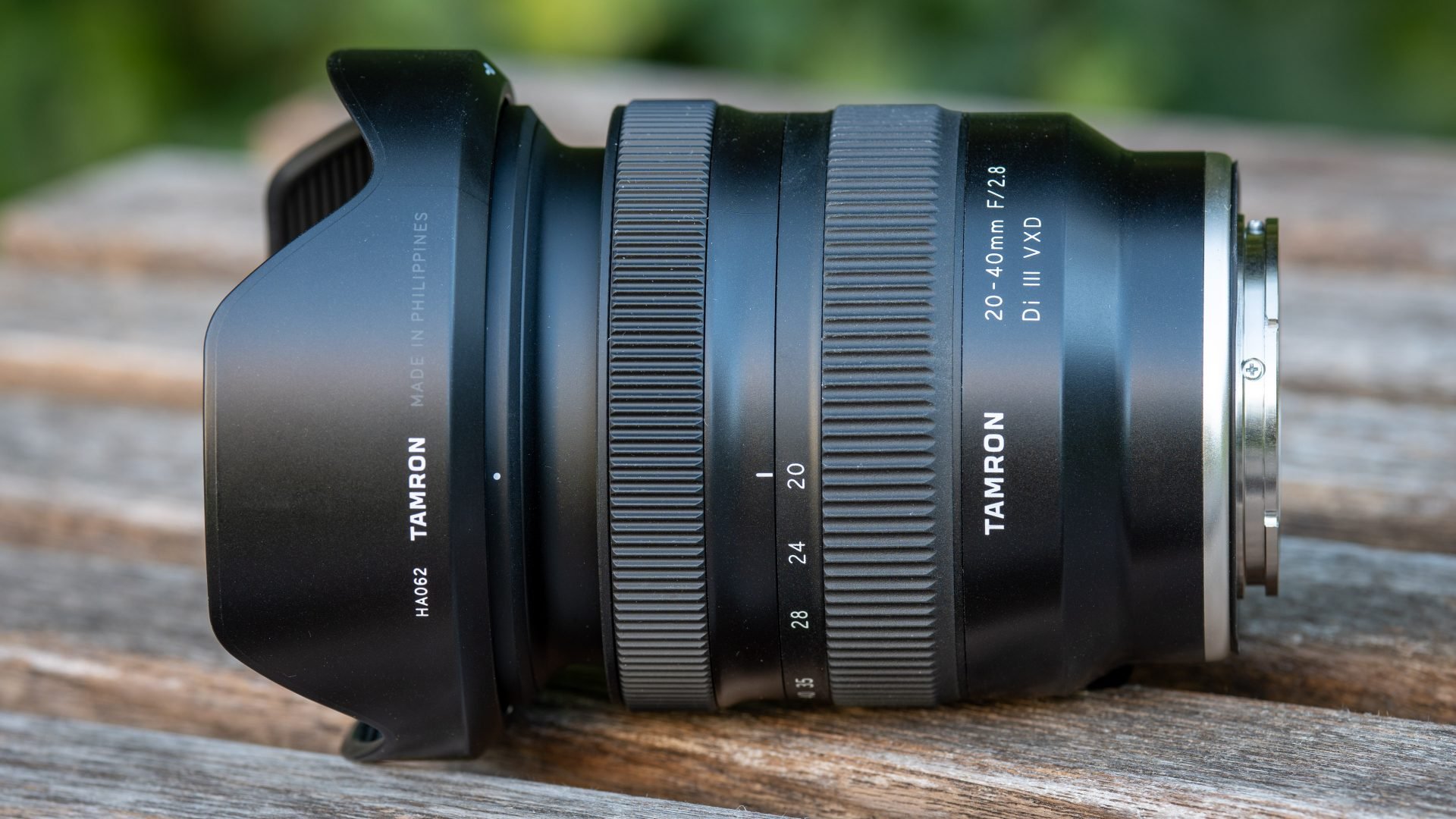
 If you’re looking for covering your wide-angle needs with an f2.8 zoom the new Tamron 20-40mm f2.8 Di III is a compelling alternative to Tamron’s 17-28mm f2.8 Di III for those who don’t need to go ultra-wide. The lens is very small and light, fully weather-sealed, and costs less than half of Sony’s 16-35mm f2.8 GM. Optically the Tamron 20-40mm f2.8 Di III is good to very good over the zoom range in the APS-C image-circle but the FF-corners are soft and need stopping down to become well-defined. The lens has a relatively nice Bokeh at 40mm and handles adverse contra-light situations well. It also delivers very usable close-up performance – although at very short working distances. All-in-all Tamron’s latest zoom lens clearly earns a recommendation.
If you’re looking for covering your wide-angle needs with an f2.8 zoom the new Tamron 20-40mm f2.8 Di III is a compelling alternative to Tamron’s 17-28mm f2.8 Di III for those who don’t need to go ultra-wide. The lens is very small and light, fully weather-sealed, and costs less than half of Sony’s 16-35mm f2.8 GM. Optically the Tamron 20-40mm f2.8 Di III is good to very good over the zoom range in the APS-C image-circle but the FF-corners are soft and need stopping down to become well-defined. The lens has a relatively nice Bokeh at 40mm and handles adverse contra-light situations well. It also delivers very usable close-up performance – although at very short working distances. All-in-all Tamron’s latest zoom lens clearly earns a recommendation.



